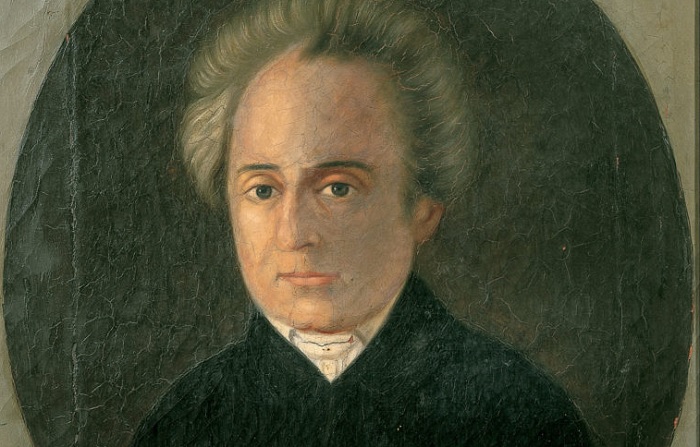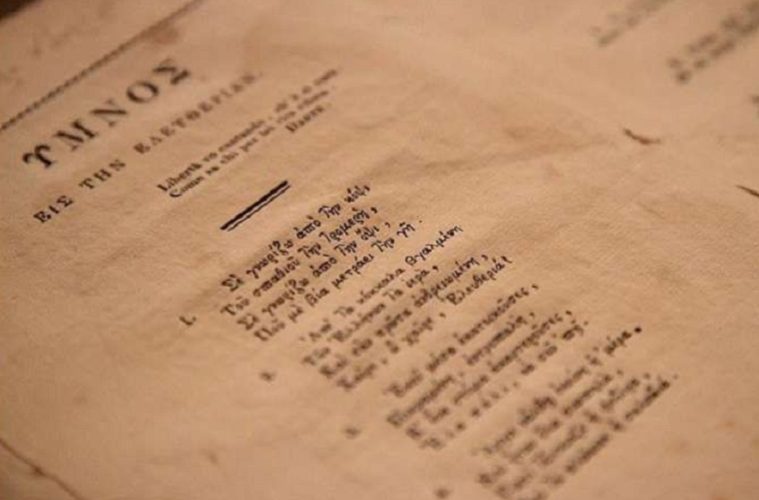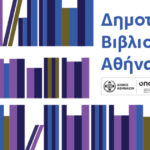At 158 stanzas, Hymn to Liberty was written in 1823 by Zakynthos-born poet Dionysios Solomos. Inspired by the Greek War of Independence, Solomos wrote the hymn to honor the struggle of Greeks for independence after centuries of Ottoman rule.
The poem recounts the misery of the Greeks under the Ottomans and their hope for freedom. He describes different events of the War, such as the execution of Patriarch Gregory V of Constantinople, the reaction of the Great Powers, extensively the Siege of Tripolitsa and the Christian character of the struggle. The topics include the ancient splendor, the suffering of slavery, the impact of the struggle, the highlight of the battles of Tripoli and Messolonghi, the victorious sea battles and finally, liberty’s heartbreaking pleas to the Greeks for concord and brotherhood.
Dionysios Solomos’ name was destined to be closely connected to Hymn to Liberty, the first two verses of which constitute the Greek national anthem. A lover of the poetic tradition, Solomos was recognised as a pioneer thanks to his passion to nurture the demotic language and combine the Cretan literature with the demotic songs. Solomos was the central figure of the Heptanese School of poetry, and is considered the national poet of Greece—not only because he wrote the national anthem, but also because he contributed to the preservation of earlier poetic tradition and highlighted its usefulness to modern literature.
In May 1823, he completed Hymn to Liberty, inspired by the 1821 Greek Revolution. The poem, which combines elements of romanticism and classicism, was published in Greece in 1824 and also in Europe one year later. The reputation of Solomos was immediately spread throughout Greece and abroad. His work had a monumental influence in uniting Greeks and creating a common national identity following the 1821 War of Independence and the establishment of a free state.

In 1828 Nikolaos Mantzaros, a Corfiot musician and friend of Solomos set the poem to music, based on a folk theme, intended for a four-voice male choir rather than preserving its character of a march. After that Hymn to Liberty was regularly heard on national holidays. Yet, it was only in 1864, after the union of the Ionian Islands with Greece, that Hymn to Liberty, whose rhythm Mantzaros changed into a march, was established as the national anthem. The national anthem, along with its music, was printed for the first time (27 copies) in London in 1873 and is considered the longest national anthem in the world by length of text.
After completing Hymn to Liberty, Solomos continued to write impressive poetry, but never fully completed another work, and very few of his works were published in his lifetime. As Solomos himself claimed, the wide appreciation of Hymn to Liberty operated against his other important works, such as The Free Besieged, The Whale, The Woman of Zakynthos and Lampros.
TAGS: LITERATURE & BOOKS | READING GREECE














